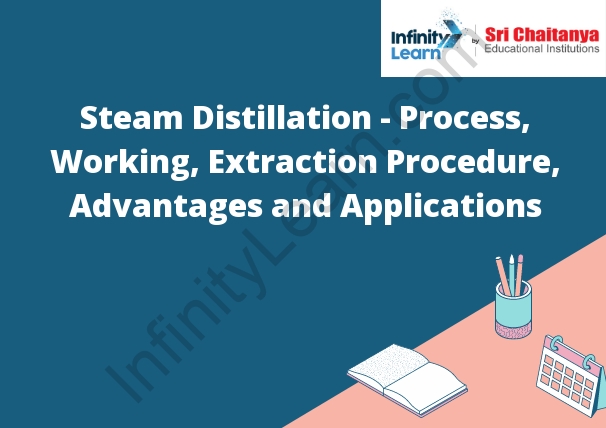Table of Contents
Overview of Steam Distillation
The process of steam distillation is a simple one that is used to extract essential oils from plants. The plant material is placed in a still and heated with steam. The steam causes the essential oils to vaporize and rise to the top of the still. The essential oils are then collected in a condenser and cooled, where they return to a liquid state.

Process of Extraction of Essential Oils by Steam Distillation
Steam distillation is a process used to extract essential oils from plant materials. The plant material is placed in a still and steam is injected. The steam causes the essential oils to vaporize. The vapor is then collected and condensed to form the essential oil.
How Does Steam Distillation Work?
- Steam distillation is a process in which a liquid is heated until it boils, and the vapor is then collected and cooled. The liquid that is boiled is called the “distillate,” and the vapor that is collected is called the “distillate vapor.”
- The distillation process can be used to purify a liquid by removing any impurities that are in the liquid. The impurities are vaporized and collected with the distillate vapor, and the purified liquid is then collected in a separate container.
- Steam distillation is also used to produce distilled water. Distilled water is water that has been purified by passing through a distillation unit.
Steam Distillation Extraction Procedure
The steam distillation extraction procedure is a technique used to extract compounds from a sample using steam. The sample is placed in a distillation flask and heated until it boils. The boiling liquid is then forced into a condenser, where the steam is cooled and turned back into liquid. The liquid is then collected in a flask. The compounds that were extracted will be in the liquid.
Principle of Steam Distillation
In a nutshell, the principle of steam distillation is that when a hot liquid is passed through a packed column of material, the vaporized molecules of the liquid will travel up the column faster than the liquid itself. The liquid will then drip back down the column and collect at the bottom. This process is repeated over and over again, and the vaporized molecules that travel the furthest up the column will be the first to condense and form a liquid.
Advantages of Steam Distillation
- The main advantage of steam distillation is that is it a very effective way of separating compounds from each other. This is because the boiling point of a compound is related to its molecular weight. The higher the molecular weight of a compound, the higher its boiling point. This means that compounds with a high molecular weight will vaporize at a higher temperature than compounds with a low molecular weight.
- Steam distillation is also a very effective way of removing impurities from a compound. This is because the boiling point of a compound is also related to its purity. The higher the purity of a compound, the higher its boiling point. This means that compounds with a high purity will vaporize at a higher temperature than compounds with a low purity.
Applications of Steam Distillation
Steam distillation is used in many industries for the purification or separation of compounds. Some of these applications include:
1. The production of essential oils from plants.
2. The production of fragrances and flavors for the food and beverage industry.
3. The purification of natural products such as essential oils, terpenes, and cannabinoids.
4. The purification of petrochemicals.
5. The separation of compounds in the drug discovery process.
Essential Oils and Steam Distillation
- The use of essential oils can be traced back to ancient times, when various civilizations used these oils for religious ceremonies, food preparation, and as natural remedies. The use of essential oils for health and wellness continues to grow in popularity, as more and more people discover the benefits of these natural remedies.
- One of the most popular methods for extracting essential oils is through steam distillation. This process involves steaming the plant material to release the essential oils, which are then collected and condensed. The condensed essential oils are then bottled and sold as essential oil products.
- Steam distillation is a safe and effective way to extract essential oils from plants. The essential oils are collected and condensed, which results in a pure and potent product. The use of essential oils can provide a variety of health benefits, and steam distillation is the best way to ensure that you are getting the purest and most potent essential oils.
Some Solved Problems on the Concept of Steam Distillation
1. What is the main purpose of steam distillation?
The main purpose of steam distillation is to purify a liquid by removing any impurities that are dissolved in it or suspended in it.
2. How does steam distillation work?
Steam distillation works by heating a liquid until it boils and then using the steam to purify another liquid. The steam carries away any impurities that are dissolved in the boiling liquid, leaving the purified liquid behind.









